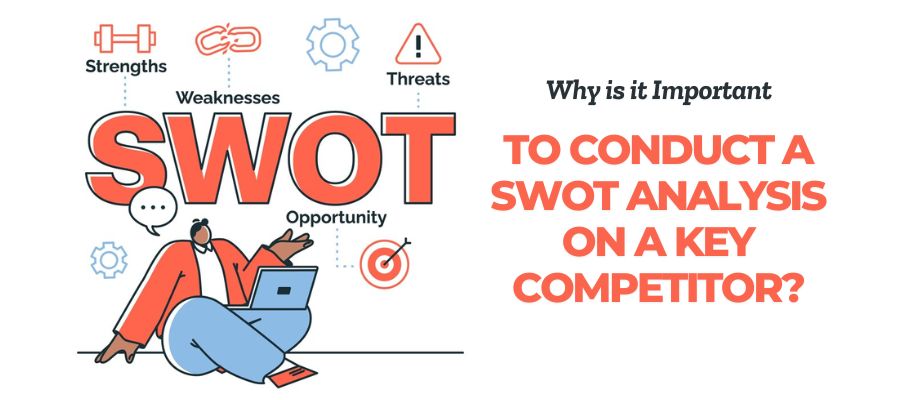Understanding yourself is the first step to personal growth. One effective way to do this is by using a SWOT analysis. This tool helps you look closely at your strengths, weaknesses, opportunities, and threats. By examining these areas, you can find ways to improve yourself and reach your goals. Let’s explore how to use SWOT analysis for personal development and unlock your potential.
Understanding SWOT Analysis for Personal Development
What is SWOT Analysis?
SWOT stands for Strengths, Weaknesses, Opportunities, and Threats. It’s a powerful tool that helps you understand yourself better. You can use it to look at your personal life and see where you can grow. By identifying your strengths and weaknesses, you can find opportunities for improvement and recognize potential challenges.
Benefits of SWOT Analysis in Personal Growth
Using a SWOT analysis for personal development has many benefits:
- Clarity: It helps you see your skills and areas for improvement.
- Focus: You can concentrate on what matters most for your growth.
- Actionable Steps: It gives you a roadmap to follow SWOT analysis for personal development.
How SWOT Analysis Differs from Other Self-Assessment Tools
Unlike other self-assessment tools, a SWOT analysis:
- Combines internal factors (strengths and weaknesses) with external factors (opportunities and threats).
- Encourages a balanced view of both positive and negative aspects of your life.
- Is flexible and can be used at any stage of your personal development journey.
A personal SWOT analysis is like a mirror reflecting your true self, helping you to see where you shine and where you can improve. By conducting a SWOT analysis for personal development, you can better understand your strengths and weaknesses in the context of growth. This process helps you identify areas where you can capitalize on opportunities and work on potential threats to your success.
Identifying Your Strengths
Questions to Uncover Your Strengths
To find out what your strengths are, ask yourself these questions:
- What skills come easily to me?
- What do people often compliment me on?
- What achievements am I most proud of?
- What unique traits do I have that make me different?
- What activities do I enjoy and excel at?
Examples of Personal Strengths
Strengths can vary widely. Here are some examples:
- Problem-solving skills
- Strong communication abilities
- Creativity in projects
- Ability to work well in teams
- Technical skills in specific areas
Leveraging Strengths for Growth
Once you identify your strengths, think about how to use them to reach your goals. Here are some ways:
- Set goals that align with your strengths.
- Seek opportunities that allow you to use your skills.
- Share your strengths with others to build connections.
- Reflect on past successes to guide future actions.
Recognizing your strengths is a powerful step towards personal growth. Embrace what makes you unique and use it to your advantage!
Recognizing Your Weaknesses
Common Personal Weaknesses
Identifying your weaknesses is a crucial step in personal development. Here are some common areas where people often struggle:
- Procrastination
- Poor time management
- Lack of confidence
- Difficulty in teamwork
- Weak public speaking skills
How to Be Honest About Your Weaknesses
Being truthful about your weaknesses can be uncomfortable, but it’s essential for growth. Here are some questions to help you reflect:
- What tasks do I find challenging?
- What feedback have I received from others?
- What skills do I wish I had?
- What situations make me feel insecure?
- Where do I often fall short?
Spotting Opportunities for Growth
Identifying External Opportunities
To find opportunities for personal growth, start by looking outside yourself. External factors can greatly enhance your situation. Consider the following:
- Market trends that are emerging in your field.
- New projects or initiatives at your workplace.
- Networking events that could connect you with influential people.
- Professional development courses that can boost your skills.
- Job openings that align with your career goals.
Swot Analysis for Personal Development Examples:
Here are some common opportunities you might encounter:
- A chance to work on a new project at your job.
- An upcoming seminar or workshop in your area of interest.
- A mentor who can guide you in your career.
- Online courses that can help you learn new skills.
- Community events where you can showcase your talents.
Maximizing Opportunities for Success
To make the most of these opportunities, keep these tips in mind:
- Stay open-minded and adaptable to new situations.
- Regularly assess your surroundings for potential openings.
- Be proactive in seeking out chances to grow.
- Network with others to discover hidden opportunities.
Goals of a SWOT Analysis?
The goal of a SWOT analysis is to assess the strengths, weaknesses, opportunities, and threats of a business or project. This framework helps organizations identify internal and external factors that can impact their performance. By understanding these elements, businesses can make informed decisions, improve strategies, and optimize their operations to achieve their objectives.
The goal of a SWOT analysis is to:
- Identify Internal Strengths: Recognise what a business or project does well, such as unique capabilities, resources, or market advantages.
- Recognize Internal Weaknesses: Pinpoint areas that need improvement, such as limited resources, gaps in expertise, or operational inefficiencies.
- Uncover External Opportunities: Spot favorable external conditions or trends that can be capitalized on for growth, expansion, or competitive advantage.
- Identify External Threats: Highlight external risks, such as market competition, regulatory changes, or economic downturns that could hinder success.
By achieving these goals, businesses can develop strategic plans that leverage strengths, address weaknesses, take advantage of opportunities, and mitigate potential threats.
Tips for an Effective SWOT Analysis
- Be Objective: The goal of a SWOT analysis is to get a clear picture of your situation. Avoid exaggerating your strengths or downplaying your weaknesses.
- Seek Feedback: Sometimes, it helps to ask friends or mentors for their views. They might see things you miss.
- Take Your Time: Don’t rush through your analysis. Reflect on each section carefully.
Taking Action on Your SWOT Analysis

Developing a Personal Development Plan
Once you have completed your SWOT analysis, the next step is to create a personal development plan. This plan should include:
- Clear goals based on your strengths and opportunities.
- Specific actions to address your weaknesses.
- Timelines for achieving these goals.
Setting Realistic Goals Based on SWOT
When setting goals, make sure they are:
- Specific: Clearly define what you want to achieve.
- Measurable: Include criteria to track your progress.
- Achievable: Ensure your goals are realistic.
- Relevant: Align your goals with your personal values and aspirations.
- Time-bound: Set deadlines to keep yourself accountable.
Tracking Your Progress and Adjusting
To stay on track, regularly review your progress. Consider using a simple table to monitor your goals:
| Goal | Target Date | Progress | Notes |
|---|---|---|---|
| Improve public speaking | 3 months | 50% | Join a local club |
| Learn a new skill | 6 months | 30% | Online course enrolled |
By taking these steps, you can effectively turn your SWOT analysis into actionable strategies that lead to personal growth.
Which of the Following Should a Personal Swot Analysis Consider?
A personal SWOT analysis should consider the following:
- Strengths:
- Skills or talents you excel at
- Personal achievements
- Positive traits, such as resilience or leadership
- Strong support networks
- Weaknesses:
- Skills you lack or need improvement in
- Habits or behaviors that limit success
- Personal challenges, such as procrastination or poor time management
- Limited resources or knowledge
- Opportunities:
- New career or personal development options
- Trends or changes in your field that you can leverage
- Growing your network or learning new skills
- Resources or support available for self-improvement
- Threats:
- External obstacles like competition in your field
- Economic or job market uncertainties
- Personal limitations or stressors that may hold you back
- Technological or industry changes that could impact your position
Considering these factors helps in personal development, career planning, and overcoming challenges. A SWOT analysis for personal development provides a structured approach to assess your skills, habits, and growth potential. By recognizing opportunities and addressing weaknesses, you can create a clear roadmap for personal and professional success.
Conclusion
In conclusion, using a personal SWOT analysis can be a powerful tool for your growth. By understanding your strengths, you can build on what you’re already good at. Recognizing your weaknesses helps you know what to work on, turning them into chances for improvement. Identifying opportunities allows you to take advantage of situations that can help you succeed. Lastly, being aware of threats prepares you to face challenges head-on. Overall, this analysis gives you a clear path to follow, helping you reach your personal and professional goals.
Frequently Asked Questions
1. What does SWOT stand for?
SWOT stands for Strengths, Weaknesses, Opportunities, and Threats. It’s a tool used to help you understand your personal and professional situation.
2. How can I identify my strengths?
To find your strengths, think about what you do well and what others praise you for. Consider what activities make you feel energized.
3. Why should I do a personal SWOT analysis?
A personal SWOT analysis helps you see where you can grow and improve. It can guide you in setting goals and making plans for your future.
4. How often should I update my SWOT analysis?
You should revisit your SWOT analysis regularly, especially when you face big changes in your life, like starting a new job or moving.
5. What are some common weaknesses people have?
Common weaknesses include procrastination, poor time management, and lack of confidence. It’s important to recognize these to work on them.





